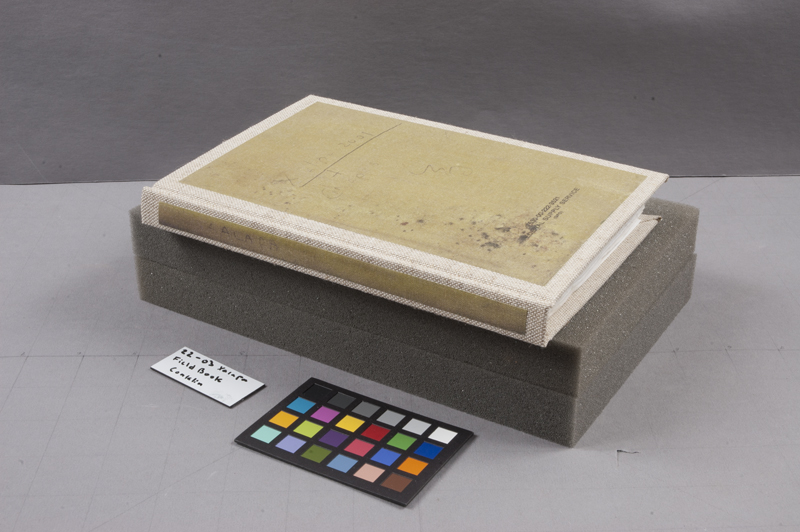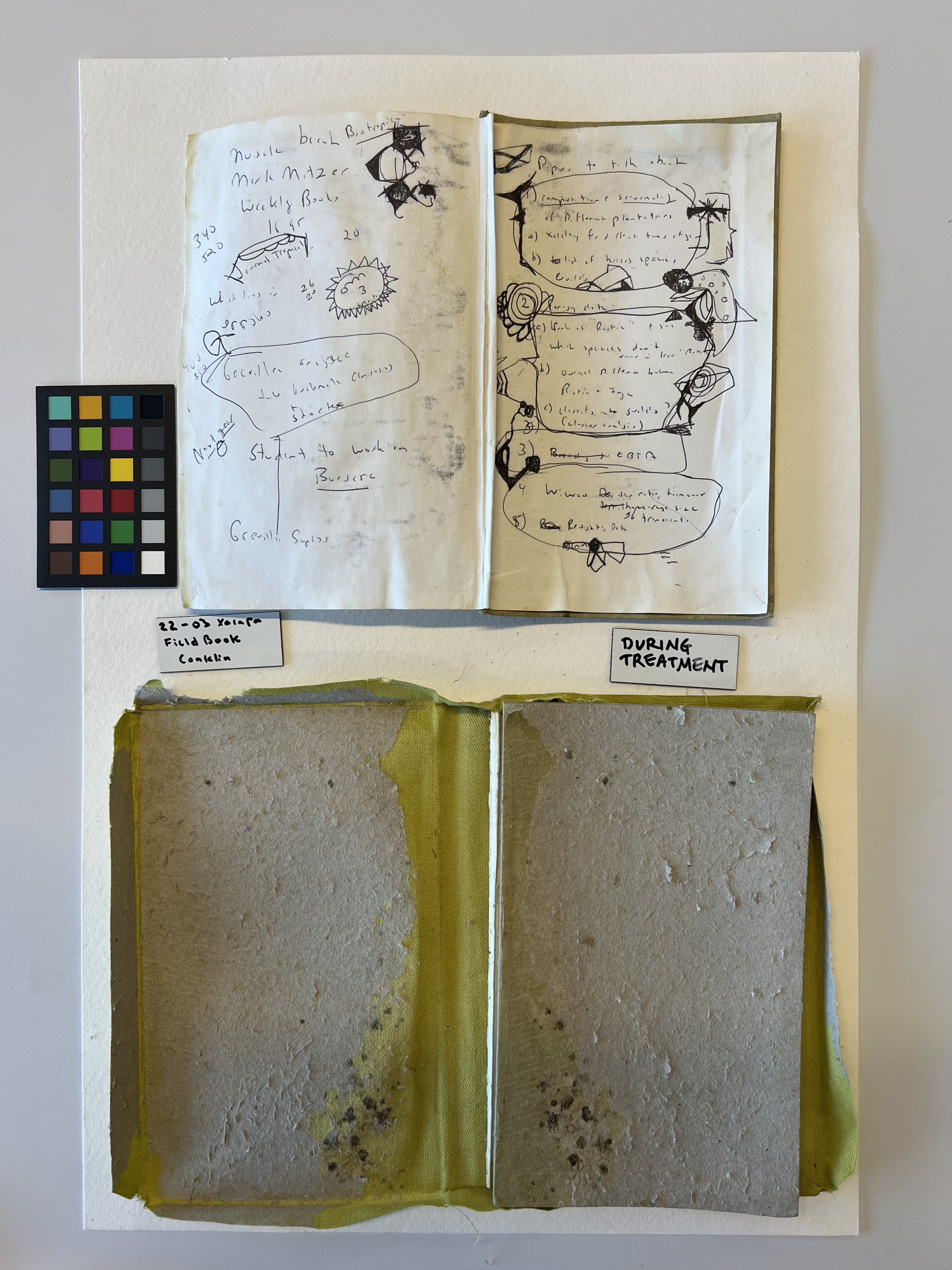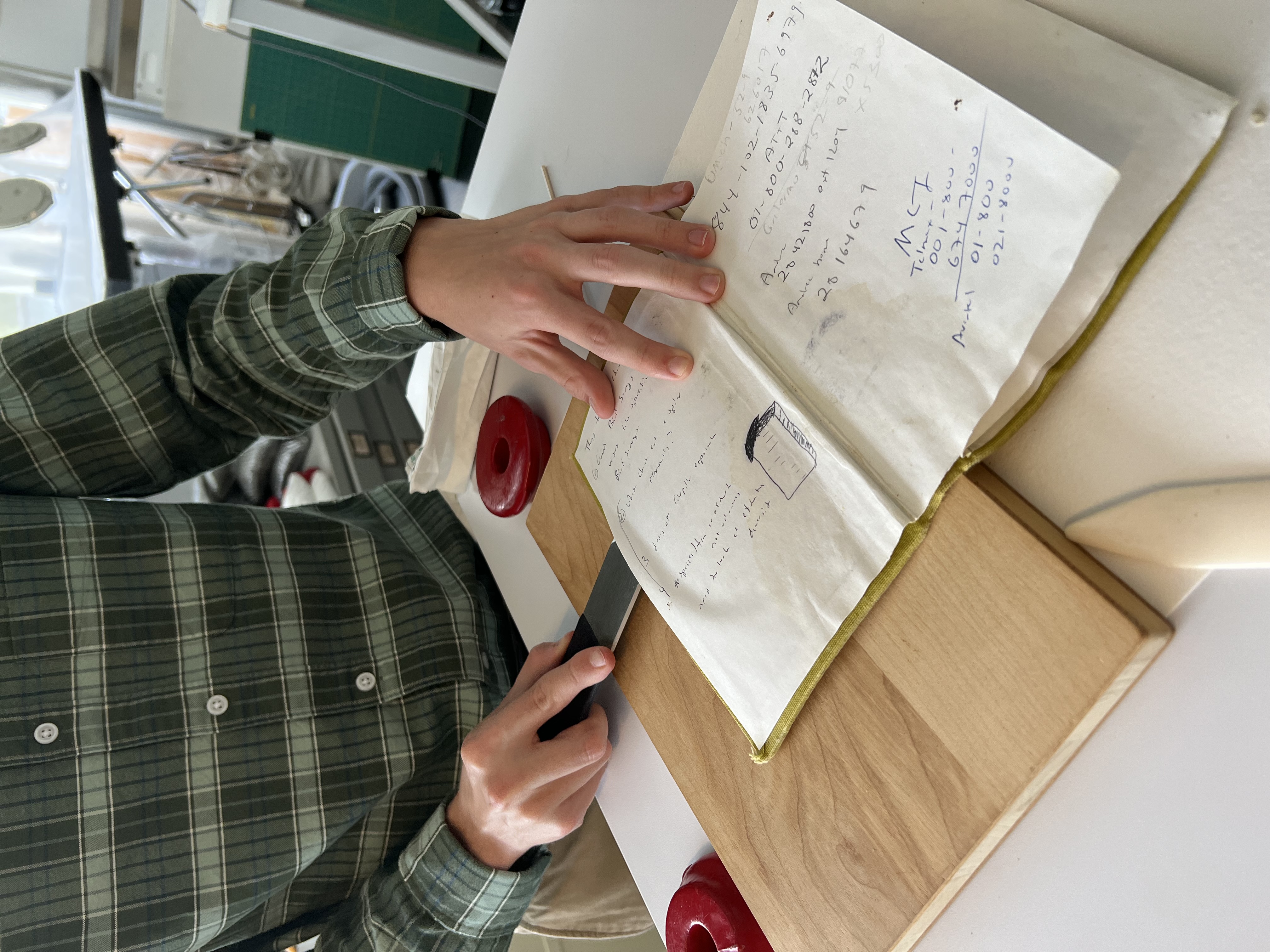We’re lucky that our interns love coffee, because for this summer’s final project, I selected Russell Greenberg’s Field notes, Xalapa and Chiapas, Mexico, 2001 for a full conservation treatment. If you’ve not had your morning cup yet, you may be wondering why we celebrate his work on National Coffee Day. Dr. Greenberg was an ornithologist, founder and director of the Smithsonian Migratory Bird Center, where he is credited with starting the movement for shade-grown, bird-friendly coffee. Greenberg's legacy carries on through the Smithsonian Bird Friendly program, which you can support with simple actions, and if you partake, your next cup of delicious coffee from farmers (and the birds and insects) who support this collaborative network for sustainable production.
So why was this particular field book selected for treatment? When cataloger Lesley Parilla reviewed the 2016 accession of the Center’s research records (Accession 16-179, Smithsonian Migratory Bird Center), she noticed that there was apparent mold growth from an unknown “moisture event”. While we don’t think it had gotten coffee spilt upon it, the author’s field work in the rainforests of Mexico offered plenty of damp conditions and opportunity for inoculation by fungal spores. The rest of the collection seemed unaffected, so we immediately isolated it in the collections freezer to stabilize it until we could turn from our other conservation projects to its treatment. The nature of the book’s physical condition offered locale-based evidence about his field observations, and we chose to reduce the risk of that mold affecting our users and the adjacent collections.
The Approach
How does one fully conserve a moldy book – and should we? After bringing the book to ambient temperature, fully drying, and performing an assessment under the fume hood, intern Ben Conklin and I conducted a “curator-conservator interview” with archivist Jennifer Wright. She described the contents of the textblock, not necessarily including the endpapers or cover, as being most important to the scientific record, and that if the latter two could not be saved, a facsimile from our documentation would do. A new binding that shows our level of care, and permits safe access to the contents for all, would be acceptable.
 |
| The “conservation binding” showing new cover/case, with facsimile labels. SIA Acc. 16-179. Field notes, Xalapa and Chiapas, Mexico, 2001. Image no. SIA-CONS_20220822_01.jpg |
Conservators weigh risk and benefit of potential loss during our interventions. There are books for which we would not think twice about replacing the cover, or entire contents, but for manuscripts and annotations, that ineffable touch of the hand is quite important. To see the handwriting on the cover was enough to move one visiting colleague, who had been a personal friend to the author, quite deeply. However, it remained true that the cover contained the bulk of potentially hazardous microbiota, and the type of structure, a green Federal notebook, is not a rare format. In fact, you can see another of this type in one of several that we have already digitized (see Related Resources, below). With Wright’s input, we arrived at a compromise that would ensure the safety of the work and workers, which was to create a new cover and do our best to preserve most aspects of the original.
 |
| Anailah Funchess, Camilia Bell and Efeh Ibojie (L-R) discuss the treatment plan for SIA Acc. 16-179, Field notes, Xalapa and Chiapas, Mexico, 2001, with Ben Conklin (R). Image no. SIA-CONS_20220801_20 |
The Treatment
 |
| Separating the bookcloth from the boards confirmed that the majority of mold damage was found in the book covers, not the textblock. Note matching stain in the lower left corner of the upper board, seen at lower edge of this “during treatment” image. Image no. SIA-CONS_20220802_27 |
During treatment, we determined that the mold fungal bodies were isolated to the cover. However, spores and hyphae can be invisible to the eye. We successfully surface cleaned the entire textblock, and after solubility testing, were able to treat the original endpapers and flyleaves in aqueous alcohol solutions to address any remaining microbes. However, depending on a few factors, this can have a long-term effect on the strength of the paper. To offset further stress, we made new compound endpapers with additional blank leaves, hinged with textile at front and back, and sewed through that hinge to attach them to the textblock’s new spine lining material. This assemblage will take the mechanical strain inherent in opening the new case. The moldy binders’ board remnants were discarded, and the original bookcloth was treated to dessicate mold throughout the thickness of the cloth. The original bookcloth, along with a note about the still noticeable, but greatly improved, condition and non-toxic treatment was sealed into a polyester envelope to be housed with the new binding. We imagine that Russ would approve, and future researchers will find this a suitably sustainable solution.
 |
| Ben Conklin uses a lifting knife to split the book board and lift the endpaper pastedown from a water and mold damaged book cover. SIA Acc. 16-179. Field notes, Xalapa and Chiapas, Mexico, 2001. Image no. SIA-CONS_20220802_24 |
 |
| Ben Conklin uses HEPA filtered suction over a downdraft table to remove particulates from a water and mold damaged book cover. SIA Acc. 16-179. Field notes, Xalapa and Chiapas, Mexico, 2001. Image no. SIA-CONS_20220802_23 |
Related Collections
- Smithsonian Institution Archives, Accession 16-179, Smithsonian Migratory Bird Center, Research Records
Related Resources
- Read another Greenberg field book, transcribed by our Volunpeers for World Migratory Bird Day. Russell Greenberg - Field notes, Mexico, 1987 | Smithsonian Digital Volunteers (si.edu)
- Lockshin, Nora S., and R. William Bennett III. “Smudges, Snakeskins, and Pins, Oh My!” Book and Paper Group Annual 37 (2018): 125–42. https://cool.culturalheritage.org/coolaic/sg/bpg/annual/v37/bpga37-21.pdf
- On James Smithson, coffee house culture and scientific exchange, by Pamela Henson. https://siarchives.si.edu/blog/james-smithson-oxford
Produced by the Smithsonian Institution Archives. For copyright questions, please see the Terms of Use.

Leave a Comment